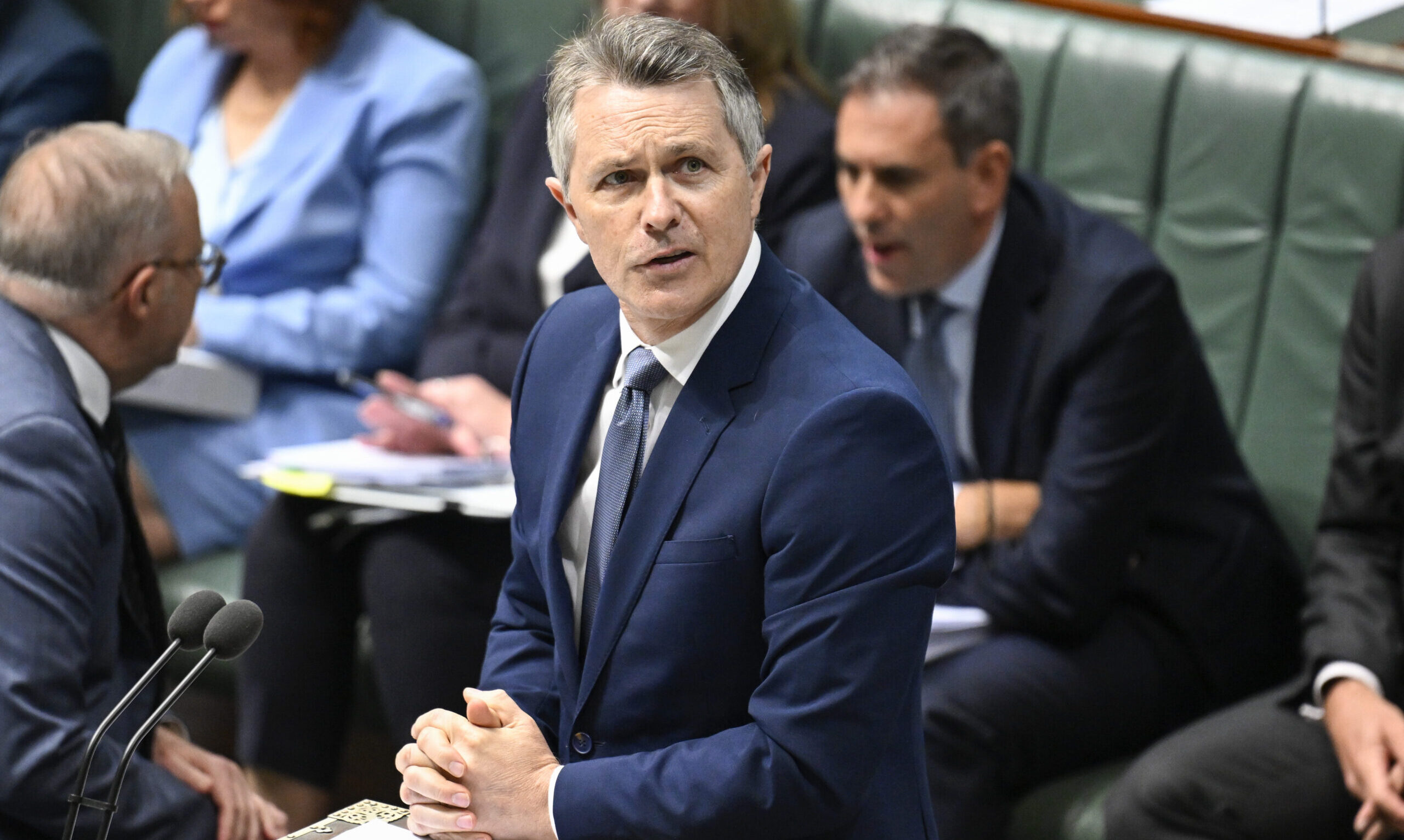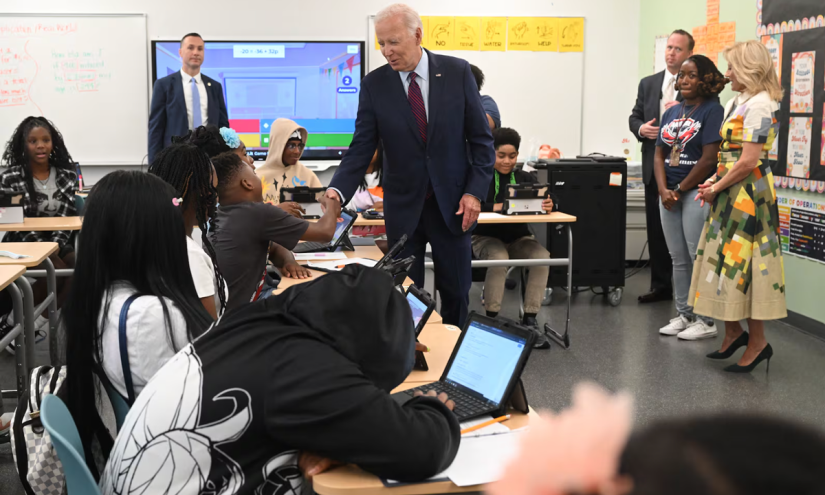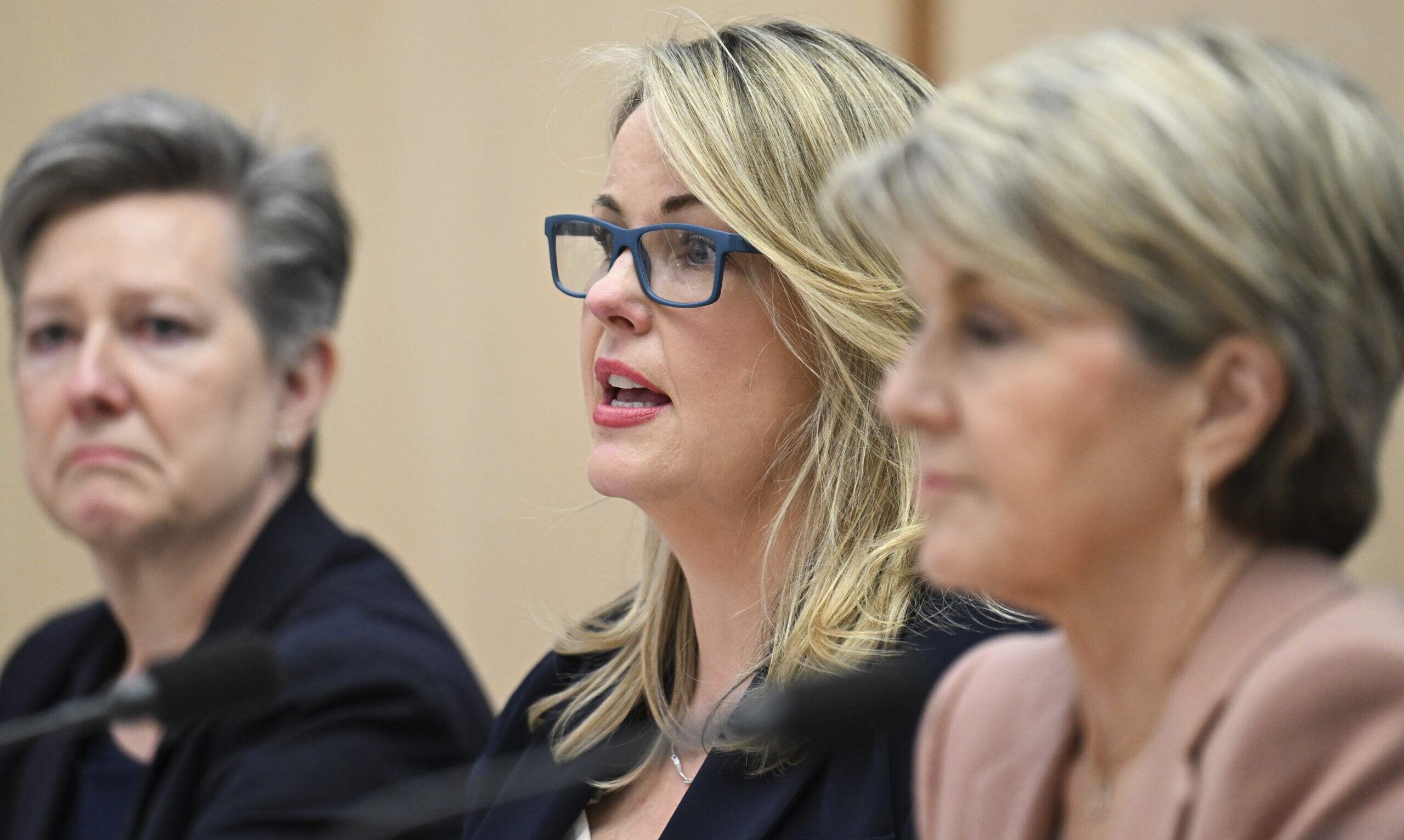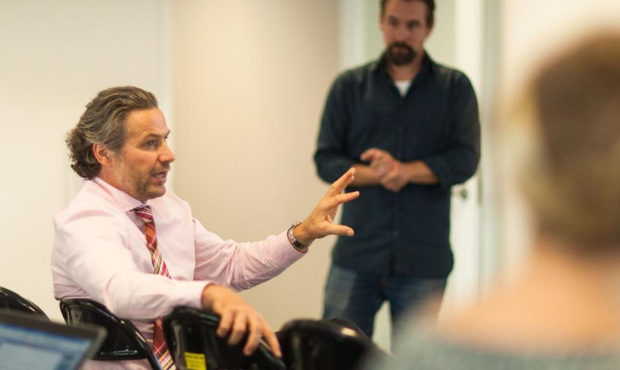Education Minister Jason Clare has explained to his colleagues exactly how his proposed new education body would steward the tertiary education sector.
Please login below to view content or subscribe now.
Membership Login

Education Minister Jason Clare has explained to his colleagues exactly how his proposed new education body would steward the tertiary education sector.
Please login below to view content or subscribe now.

This week on the podcast artificial intelligence remains front and centre, with a look at the growing concerns around AI-generated teaching content and the student backlash it’s prompted. We also discuss our new project with Kortext on AI in pedagogy and an emerging debate over AI’s place in the REF process.
Plus we explore the financial strategies universities in England are adopting in response to mounting pressures, and what does a more ambitious civic university agenda look like in 2025?
With James Coe, Associate Editor at Wonkhe, Jo Heaton-Marriott, Managing Director at the Authentic Partnership, Jonathan Simons, Partner and Head of the Education Practice at Public First and hosted by Mark Leach, Editor-in-Chief at Wonkhe.
The end of pretend – AI and the case for universities of formation
High quality learning means developing and upskilling educators on the pedagogy of AI
Counting the cost of financial challenges in English higher education
Civic 2.0 – the civic university agenda but with sustainable impact
You can subscribe to the podcast on Apple Podcasts, YouTube Music, Spotify, Acast, Amazon Music, Deezer, RadioPublic, Podchaser, Castbox, Player FM, Stitcher,

This week on the podcast we examine how Budget 2025 reshapes the university funding model – from the international levy and modest new maintenance grants, to confirmed tuition fee uplifts and changes to pension tax arrangements that will affect institutional costs.
We discuss what the package tells us about the government’s approach to public finances, the politics of international recruitment, and the sustainability of cross-subsidy in a tight fiscal environment for higher education.
Plus we discuss research and innovation announcements and get across debate in Holyrood on the Tertiary Education and Training (Funding and Governance) (Scotland) Bill.
With Ken Sloan, Vice-Chancellor and CEO at Harper Adams University, Debbie McVitty, Editor at Wonkhe, David Kernohan, Deputy Editor at Wonkhe and presented by Jim Dickinson, Associate Editor at Wonkhe.
Budget 2025 for universities and students
Universities now need to be much clearer about the total cost of a course
Student finance changes in the budget – Director’s cut
Reclassification ghosts and jam tomorrow at stage 2 of Scotland’s tertiary bill
A government running out of road still sets the economic weather for higher education
A change in approach means research may never be the same again
You can subscribe to the podcast on Apple Podcasts, YouTube Music, Spotify, Acast, Amazon Music, Deezer, RadioPublic, Podchaser, Castbox, Player FM, Stitcher, TuneIn, Luminary or via your favourite app with the RSS feed.

Get stories like this delivered straight to your inbox. Sign up for The 74 Newsletter
Chalkbeat Ideas is a new section featuring reported columns on the big ideas and debates shaping American schools. Sign up for the Ideas newsletter to follow our work.
Democrats are in disarray on education — according to a growing chorus of Democrats.
A variety of left-leaning journalists, politicians, and advocates have all recently claimed that voters have become disillusioned with the party’s approach to schools. Often, these commentators cite anger over pandemic-era closures and argue that Democrats need to embrace tougher academic standards or school choice.
“For decades, when pollsters asked voters which party they trusted more on education, Democrats maintained, on average, a 14-point advantage. More recently that gap closed, then flipped to favor Republicans,” wrote former Chicago Mayor Rahm Emanuel last month.
Is this emerging conventional wisdom true, though? This assertion has typically relied on one or two surveys, rather than a comprehensive look at the data. So I compiled all publicly available polls I could find that asked voters which party they preferred on education.
The verdict was clear: In more than a dozen surveys conducted this year by eight different organizations, all but one showed Democrats with an edge on education. This ranged from 4 to 15 points. Among all 14 polls, the median advantage was 9 points. Although Democrats appear to have briefly lost this edge a few years ago, voters again now tend to trust Democrats on the issue of education, broadly defined.
The narrative that Republicans had wrested the issue of education from Democrats emerged in 2021, after Virginia’s Glenn Youngkin won a come-from-behind victory in the governor’s race after campaigning on parents’ rights.
Long-running data from the Winston Group, a political consulting firm, showed that in late 2021 and early 2022 Republicans really had eroded Democrats’ lead on education. The parties were even briefly tied for the first time since the early 2000s, when former President George W. Bush was championing No Child Left Behind. Polling commissioned in 2022 and 2023 by Democrats for Education Reform, a group that backs charter schools and vouchers, also showed Democrats falling behind on education.
Since then, though, Democrats appear to have regained their edge. In the run-up to the 2024 presidential election, the party held at least a 10-point lead, according to Winston Group. Other polls from last year also found that more voters preferred Democrats’ approach on education, even as the party lost the presidency.
Emanuel pointed me to polling from 2022. “Democrats have not gained ground as much as Trump has cost GOP gains they have made,” he says when asked about the more recent surveys.
This year in Virginia, Democrat Abigail Spanberger easily won in her bid to replace Youngkin. Education was one of her stronger issues, according to a Washington Post survey.
Some argue that these election results disprove the idea that Democrats are losing on schools. “That’s not what panned out at all,” says Jennifer Berkshire, a progressive author who writes and teaches about education. She notes that the Republican governor candidate in New Jersey also tried to make schools an issue and lost badly.
The Winston poll shows Democrats’ advantage is currently below its peak between 2006 and 2009 but is comparable to many other periods, including the tail end of the Obama administration and part of the first Trump administration.
Keep in mind: These surveys ask about education broadly, not just K-12 schools. When given the option, a good chunk of voters don’t endorse either party’s approach. For instance, a YouGov survey found Democrats up 39%-32% on education with another 29% saying they weren’t sure or that the parties were about the same.
The one public poll in which Democrats did not have an advantage came from Blue Rose Research, a Democratic-aligned firm. Ali Mortell, its head of research, says different survey methodologies can lead to different results.
Regardless, she wants to see Democratic politicians lean into the issue more. “Say they do have that trust advantage right now, [education] is still not something that they’re really talking about a lot,” Mortell says.
One of the top messages that resonates with voters focuses on addressing teachers’ concerns about stagnant pay and large class sizes, Blue Rose polling finds.
Democrats’ lead on education doesn’t appear to have grown much over the last year, according to surveys from Winston, YouGov, and Ipsos. That’s somewhat surprising since Trump’s approval has sunk generally and is low on education specifically.
Jorge Elorza, the CEO of Democrats for Education Reform, points to a survey it commissioned showing the two parties tied when it comes to making sure schools emphasize academic achievement. “Democrats should be focused on delivering results,” he says. “When we ask voters about that, it’s a toss up.” A separate DFER poll found the party with only a 1-point lead on who voters trust to ensure “students are prepared for success after high school.”
Democrats’ overall polling advantage on education does not necessarily speak to the substantive merits of their policies, however. One analysis found that Democratic-leaning states have seen bigger declines in student test scores in recent years. At a national level, Democrats have not offered a particularly clear message on K-12 education, unlike Trump.
“For the last six years there’s [been] no proactive agenda for Democrats on educational excellence,” says Emanuel.
The party’s approach to schools has clearly lost a segment of America’s political tastemakers including center-left nonprofit executives, political strategists, and even some Democratic politicians. Yet, despite insistent assertions otherwise, regular voters don’t seem to share this view, at least at the moment.
I relied on the following polls from this year, with Democrats’ lead in parentheses: Blue Rose Research (February, tied); Fox News (July +15); Ipsos (February +6, April +4, October +7); Napolitan News Service (August +9, October +6); Navigator (August +9); Strength in Numbers (May +11, October +15); YouGov (May +7); Winston (April +15, June +14, August/September +11). To find these surveys, I conducted my own search and asked a variety of large pollsters, as well as a number of advocates. Differences in results between polls can come from random error, as well as differences in sampling and question wording. Although the precise wording varied, each poll asked voters which party they preferred on education.
Chalkbeat is a nonprofit news site covering educational change in public schools.
Did you use this article in your work?
We’d love to hear how The 74’s reporting is helping educators, researchers, and policymakers. Tell us how

This week on the podcast we examine what the rise of Reform UK – and new insight into its prospective voters – might mean for universities, international education, and the wider public legitimacy of higher education.
Plus we discuss Skills England’s new guidance on local skills improvement plans – and the move to place higher education, up to postgraduate level, at the heart of local skills ecosystems – and a new study of student working lives that reveals how paid employment alongside full-time study is reshaping participation, wellbeing, and outcomes.
With Sam Roseveare, Director of Regional and National Policy at University of Warwick, Alex Favier, Director at Favier Ltd, Jen Summerton, Operations Director at Wonkhe and presented by Jim Dickinson, Associate Editor at Wonkhe.
Labour takes steps to bring higher education and local skills closer together
Long hours and poor working conditions hit students’ outcomes hard
The surprising pragmatism of Reform UK voters towards international education
Higher education’s civic role has never been more important to get right
You can subscribe to the podcast on Apple Podcasts, YouTube Music, Spotify, Acast, Amazon Music, Deezer, RadioPublic, Podchaser, Castbox, Player FM, Stitcher, TuneIn, Luminary or via your favourite app with the RSS feed.

Australian National University (ANU) staff feel “fundamentally disconnected” from the university’s leadership, a group of academics told a federal governance inquiry on Wednesday.
Please login below to view content or subscribe now.

The head of consultant firm Nous Group told a federal inquiry into university governance that most institutions have hired his firm, spending just under $40 million total.
Please login below to view content or subscribe now.

Declining trust in institutions is a defining trend of our times. Universities are certainly not immune to it, with the idea of the deteriorating “social licence to operate” of the university now a common item of discussion.
Some point to the negative press coverage universities have faced in recent years. However, our recent report by UCL Policy Lab and More in Common highlights that something more fundamental is going on in our politics that universities must grapple with: the political centre of gravity has moved towards voters who are more sceptical of universities.
Since 2016 it is well understood that political attention has shifted towards working class or “left-behind” voters (depending on your preferred characterisation) and to seats in the Midlands and northern England. These voters tend to be non-graduates and are now more commonly those seeing Reform as a potential answer to their frustrations. What our analysis found was a striking gap between how they view universities compared to the remainder of the country.
Graduates are overwhelmingly positive about universities – 81 per cent say universities have a positive impact on the nation. Among non-graduates, that figure drops to just 55 per cent. This is reflected in the wider set of concerns non-graduates have about higher education. Non-graduates are more likely to believe universities only benefit those who attend them and that the system is rigged in favour of the rich and powerful. They are also less convinced that universities have become more accessible to working-class students over the past 30 years.
It is their concerns that are driving the fact that a majority of voters emphasise the importance of vocational education over degrees and are worried about there being too many “Mickey Mouse” courses (although even graduates agree on that later point). Fewer than half are even fully aware that universities conduct research.
The graduate gap is in part what creates the more direct political challenge universities face. Reform voters are markedly more sceptical of universities than any other voter group. Less than half believe universities are good for the country. More than a third think they only benefit attendees, and nearly one in ten believe they benefit no one at all. Reform voters overwhelmingly did not go to university. If a key battleground of British politics over the next four years is to be Labour vs Reform, universities will need to engage with these voters’ concerns if they going to find their place in the conversation.
This challenge is not insurmountable. There is as much to be positive about as concerned. Our polling showed the clear majority, 61 per cent, see universities as a positive influence, both nationally and locally and the cynicism regarding some aspects of what universities are delivering is not as dire as that faced by many other institutions. Despite their relative scepticism, 45 per cent of Reform voters still see universities as benefiting the country.
Those we spoke to in focus groups were not unpersuadable. We found some scepticism, but not hostility. Another recent report by More in Common and the UCL Policy Lab ranked universities as “medium-high” in terms of how trusted they are by voters. In the turbulent times we are in, that is not a bad position.
As well as outlining where the challenges lie, our report shows how universities might go about maintaining trust and reaching more sceptical voters. Three lessons stood out.
The first is addressing the sense that universities are not supporting the skills needs of the country. The biggest concern we found about universities is the declining perception of the value of a degree. Focus groups bore out what this meant – degrees not resulting in a good job. There are two arguments which played out in focus groups that might help convince sceptics. Either that more degrees have a clear path, like those for teachers, lawyers and doctors, or by explaining the value of a degree in broadening minds and “opening doors” – that is, leading to a good job that may not relate to the content studied. Regardless, the public want confidence that universities are training the next generation of skilled professionals.
The second is by demonstrating the value of research, and the innovation and civic engagement it allows, to those who do not attend university. On this point there is much potential. When asked, the public are highly supportive of universities’ role in R&D and see it as a core purpose. In focus group discussions, a sense emerged of the benefits of university research – seen as carried out with a long term and neutral perspective. Yet few raise research unprompted, and less than half of non-graduates in our poll were even fully aware that universities do research. Articulating this role and how it benefits lives is a clear imperative.
Third is the local role. We found many see universities as a source of local pride, with the idea that universities support local business – and make their areas more vibrant – resonating. At the same time there are concerns, for example around housing and anti-social behaviour. A focus on enhancing the former and acting as a good neighbour on the latter would therefore be advisable.
All this sits in a wider context of how the public sees universities, which was at the core of what we found. In the public imagination, universities are national institutions with clear responsibilities. Indeed, Reform voters are the most likely to say that universities should focus on their national responsibilities as opposed to their international connections. Showing how these responsibilities are being met – for the whole country, not just those who study for a degree – is how the sector can maintain public trust, and meet the political challenge it faces.